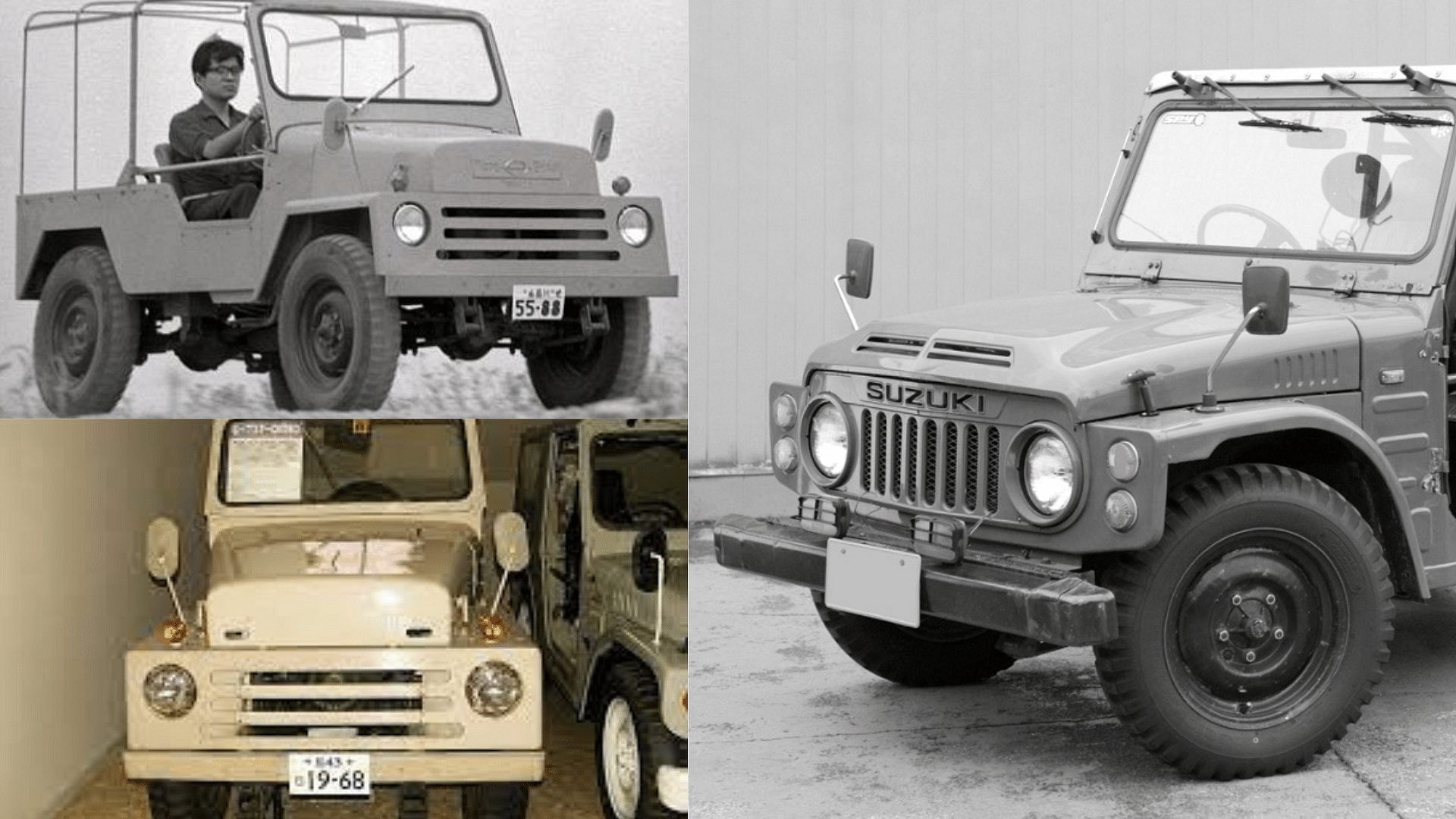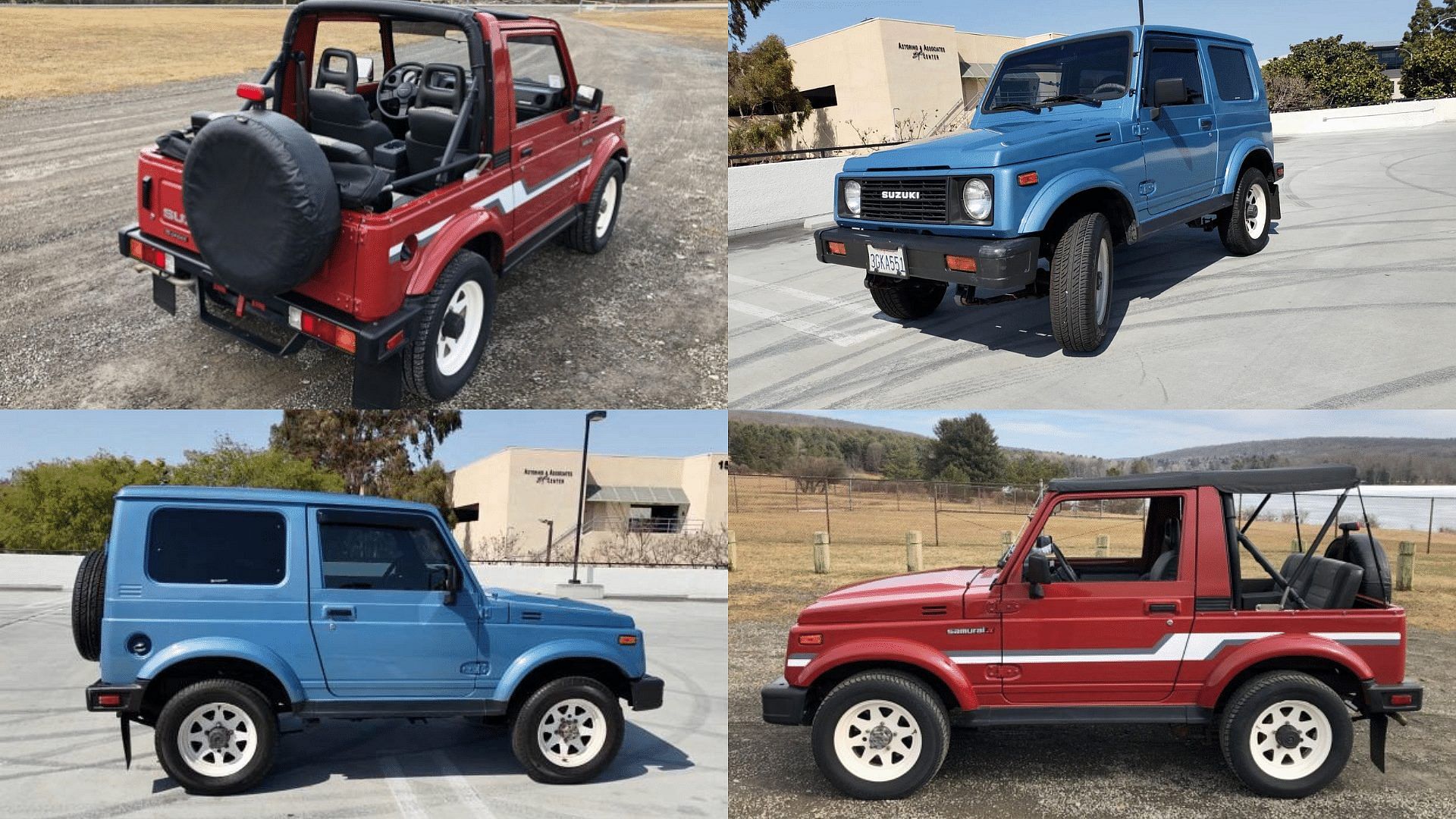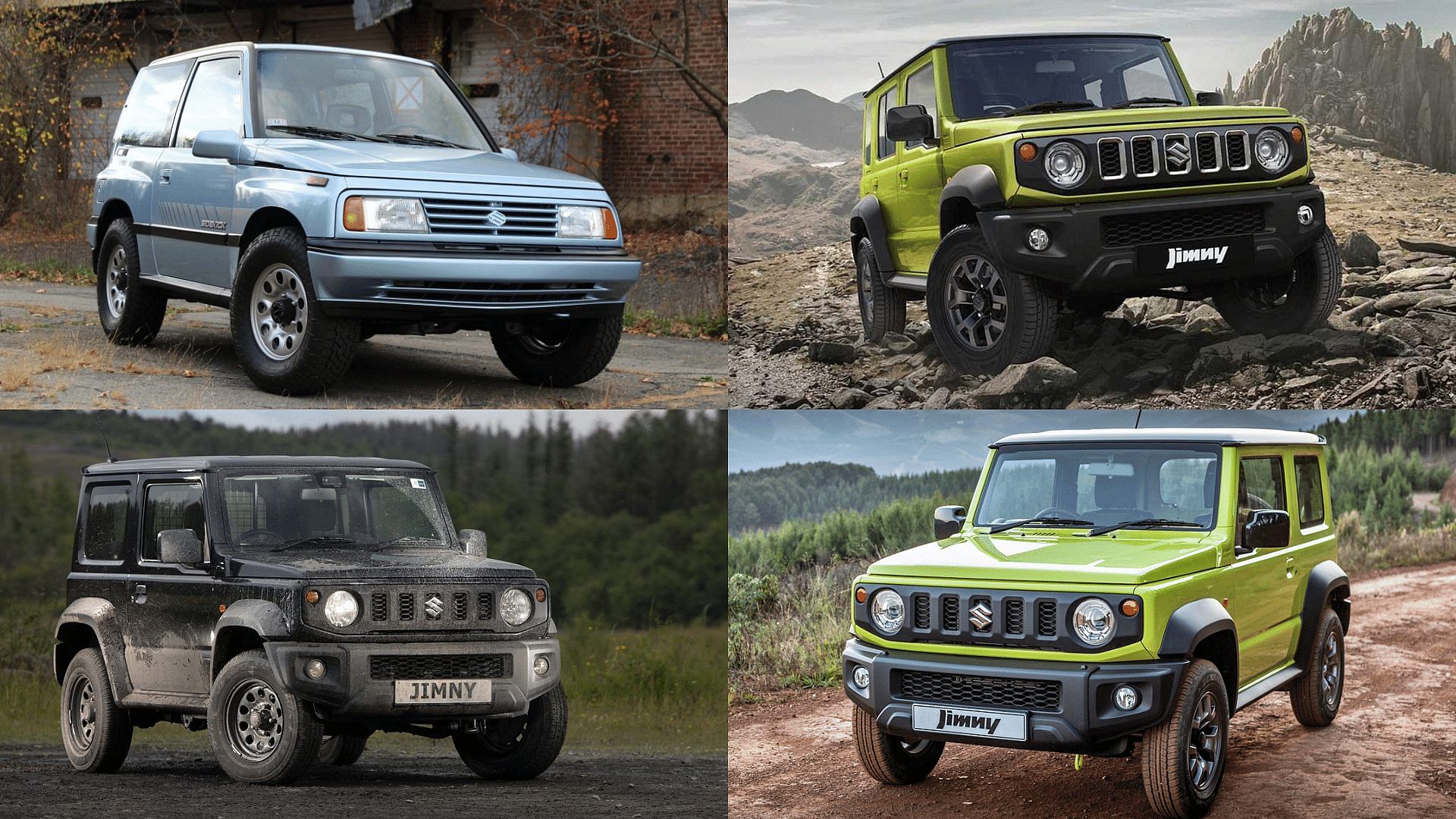Top 10 Things You Need To Know About The Suzuki Samurai
The Suzuki Samurai is considered one of the best cars to ever come out of Japan. After all, it was based on the Suzuki Jimmy model which has enjoyed great success around the world. An estimated 2.85 million units of the Suzuki Jimmy have been sold till 2018 and its popularity still continues. So why don’t we have a Samurai or Jimmy in the US? What happened? What was it like to own one? Scroll down to know more.
Published February 5, 2024

The Suzuki Samurai was known for conquering every terrain. It was blessed with off-road prowess despite its tiny size and low-output engine. It looked adorable outside and had plenty of space inside. The Samurai came with an incredibly precise gear shifter and it was a really fun drive for many. It was the first car with 4-wheel drive that Suzuki sold in the US.
10. Suzuki Samurai began somewhere else

Suzuki Samurai was a model later developed model of the original Jimmy. The Suzuki Jimmy as it was sold in Japan was a mini SUV that began its journey in 1970 as part of kei class vehicle. It was classified as an off-road SUV with a 4-wheel drive system that was available in different body styles.
The Suzuki Jimmy wasn’t entirely developed by Suzuki. It was Hope Motor Company that used Mitsubishi 359 cc in the 1968 HopeStar ON360 model. Later Suzuki bought the company, reshaped and applied changes to the ON360, and eventually started selling the new model as Light Jeep or LJ10.
9. The Grand Introduction

The Suzuki Samurai was part of the Suzuki SJ-Series that began in 1982 in Japan and the Suzuki SJ30 was the second-generation model that started in 1981. Under the same generation, a revamped SJ413 was launched which was then sold with the “Samurai” tag in the USA. The Suzuki Samurai first came to the US market in 1985 as the 1986 model. It was an updated form of the SJ413.
8. How was the reception in the market?
The Suzuki Samurai was a hit in the US. Suzuki originally planned to sell only 14,400 Samurai a year with only 1,200 units per month. However, in just the first year, 47,000 units were sold in the USA.
7. Competition against the Jeep Wrangler
The Suzuki Samurai was cheaper than many of its competitors, especially the Wrangler. Customers would pay only a starting price of $6,550 which was two-thirds of the price for the 1987 Wrangler model. In 1987, the Samurai ended up outselling the Wrangler by a 2:1 ratio.
6. Suzuki Samurai Design, exterior, and iterations

The Suzuki Samurai was compact and light yet capable enough for off-roading. It was a sweet companion for short trips around the town. The Suzuki Samurai is considered a packaging marvel as it was very cleverly designed. It was a nicely proportioned car that had a cute appeal to it. The Suzuki Samurai had a wheelbase of only 80 inches and its length was limited from 130 to 135 inches.
Although tales of so-called well-designed Samurai still live today, these tales also mention the defects that they had. For starts, its doors were paper thin. Overall, it didn’t have solid structural rigidity in its doors. Having said that, the Suzuki Samurai had round headlights and a steel bumper. The front end could also be equipped with a bullbar. On the side, it had fender flares and functional vents.
Suzuki launched an updated and re-tuned model with the “1988.5 model Samurai” name. Now suspension was on the softer side. The 1988.5 Suzuki Samurai also came with a bigger anti-roll bar which decreased the overall body roll. That said, the Suzuki Samurai was available in convertible or hardtop body styles with only front seats. The rear seats were given in 1994 models.
5. Suzuki Samurai Interior and cabin

Despite, its small-looking design, the Suzuki Samurai had a spacious interior for two. There was plenty of headroom and legroom. Inside the cabin, a non-power steering wheel was given. The glove box had a button that opened the hood.
4. Current Value and Auctions for Suzuki Samurai
The Suzuki Samurai had a base price of $6,550. A total of 206,419 units were sold in the US from 1985 to 1995. Currently, the estimated auction price of the Suzuki Samurai lies between $7,500 and $10,000.
3. Engine and powertrain inside the Suzuki Samurai

The Jeep Wrangler rival, the Suzuki Samurai was powered by a 1.3L overhead-cam Inline-4 engine which was mated to a 5-speed manual transmission. The automatic transmission was offered in the Samurais which were sold outside the United States. The Samurai had a 4X4 system but Suzuki did sell a 2-wheel drive version from 1991 to 1993.
The engine in the Suzuki Samurai made 63 horsepower and 74 lb-ft of torque. A new 1.3L engine in 1991 increased the output to 66 horsepower. Later power bumps allowed the engine to produce up to 68 horsepower.
Having said that, despite being a fun drive, the Suzuki Samurai wasn’t known for its speed. It used to accelerate from 0 to 60 in 16.9 seconds.
Meanwhile, the Samurai had a rigid ladder frame that made it good for off-roading. It was also equipped with leaf springs, small skid plates, solid axles, a transfer case, recovery points, and more. Overall, the Suzuki Samurai 4X4 SUV weighed only around 2,059 lbs.
2. Suzuki Motor Corp. vs Consumers Union suit
Suzuki Samurai had some quality issues. Take its door frame for example. Furthermore, it also suffered from body roll. Subsequently, due to a damaged reputation, bad public perception, and poor sales, Suzuki had to discontinue the Samurai after 1995. However, all of this was majorly caused by a Consumer Reports review that later resulted in the Suzuki Motor Corp. v. Consumers Union of the U.S., Inc. lawsuit.
In 1988, Consumer Reports wrote a review of the Samurai and left harsh remarks such as “unsafe” and “rollovers” and gave it an "unacceptable" rating. This review/report came out when the Japanese Yen was seeing a rise against the dollar and Suzuki had to increase the Samurai prices by 30% and now it was costing $8,495.
That said, due to Consumer Reports, the sales took a massive hit. In 1996, Suzuki filed a $60 million lawsuit against Consumers Union which published Consumers Reports magazine. It alleged that the test conducted by the Consumers Union was manipulated. The case ended with “an inconclusive settlement”.
1. Successors and current legacy

In 1989, the Suzuki Sidekick model was placed on the market which was running along the Samurai model. It replaced the Suzuki Samurai in Canada but after 1995, it was the Suzuki X-90 that succeeded the Suzuki Samurai in the US. However, despite its end in the US, the Suzuki Samurai still lives as the Suzuki Jimmy in other parts of the world. Lastly, an electric version of the Suzuki Jimmy is still also on the way. It will be out in a couple of years but chances are that the US buyers will not be able to purchase it.
Write a comment
Comments
No Comments Yet






